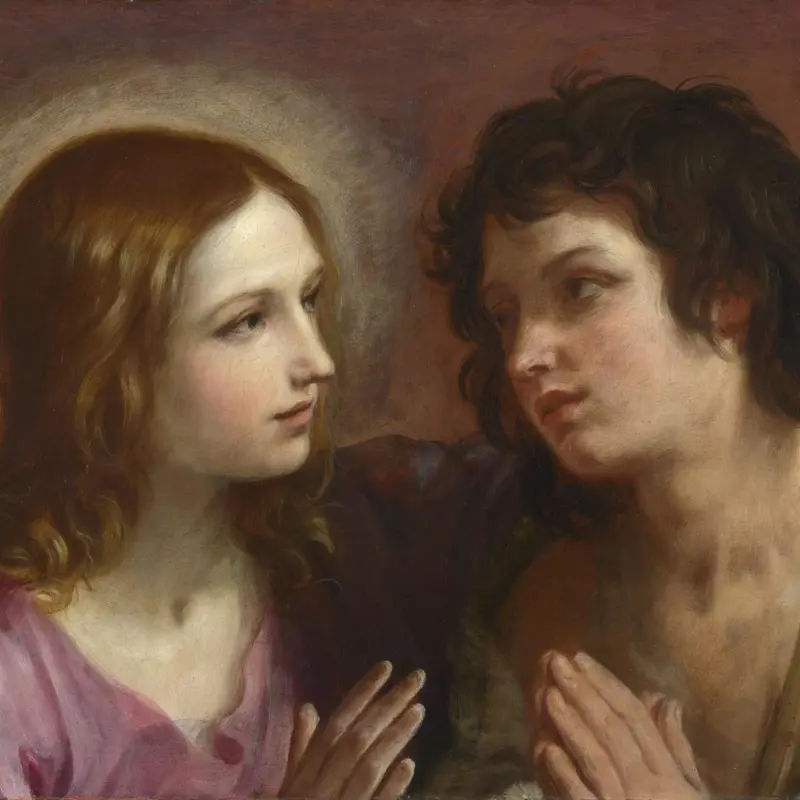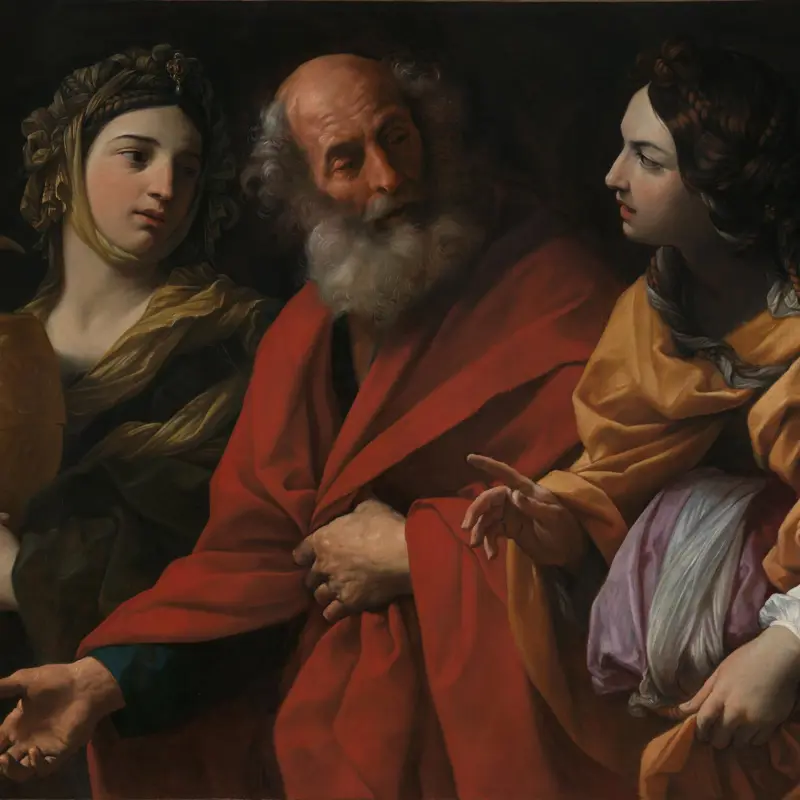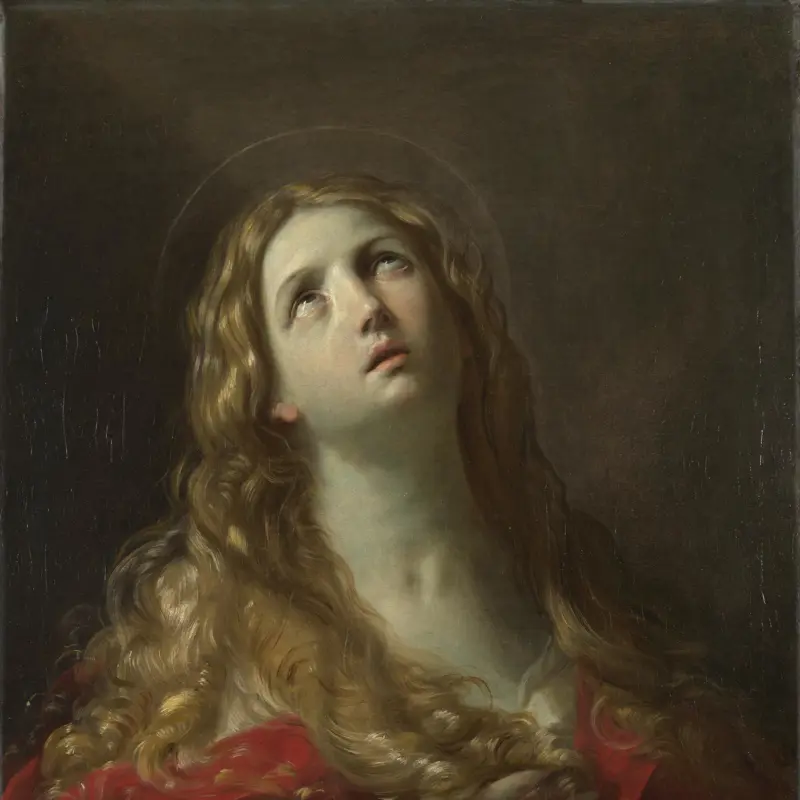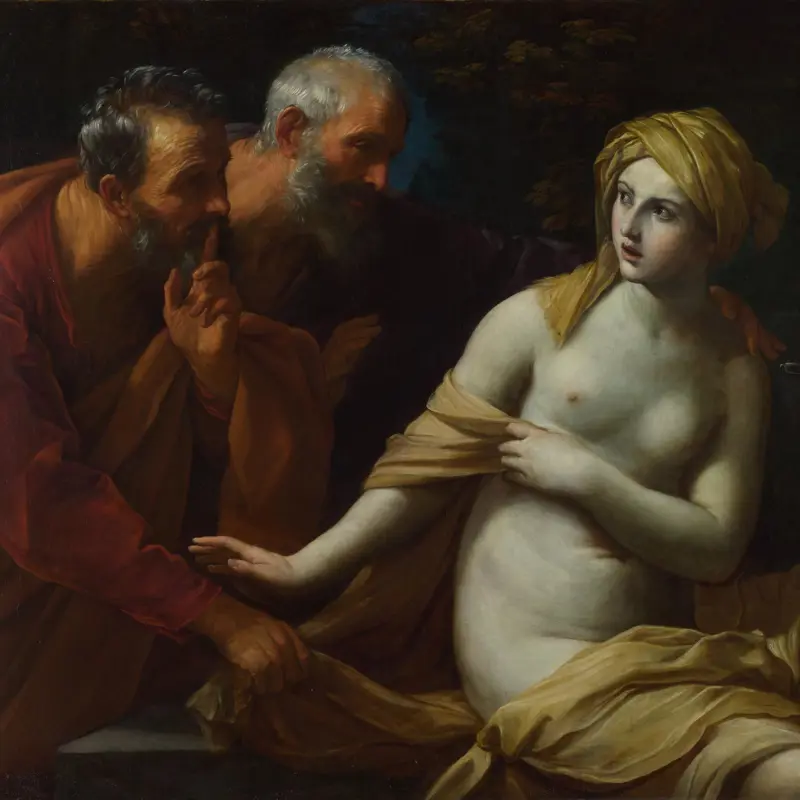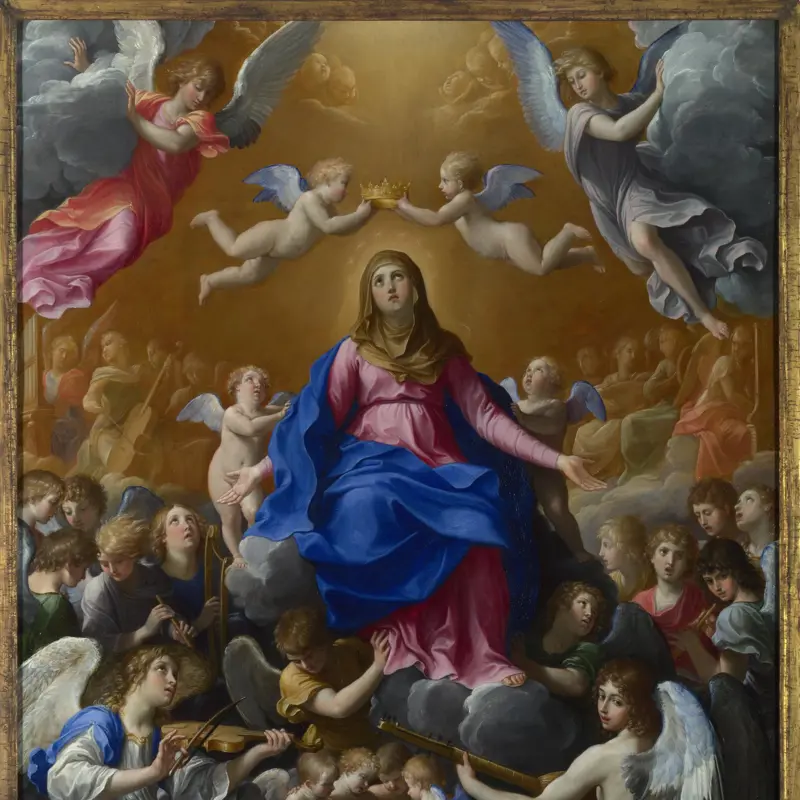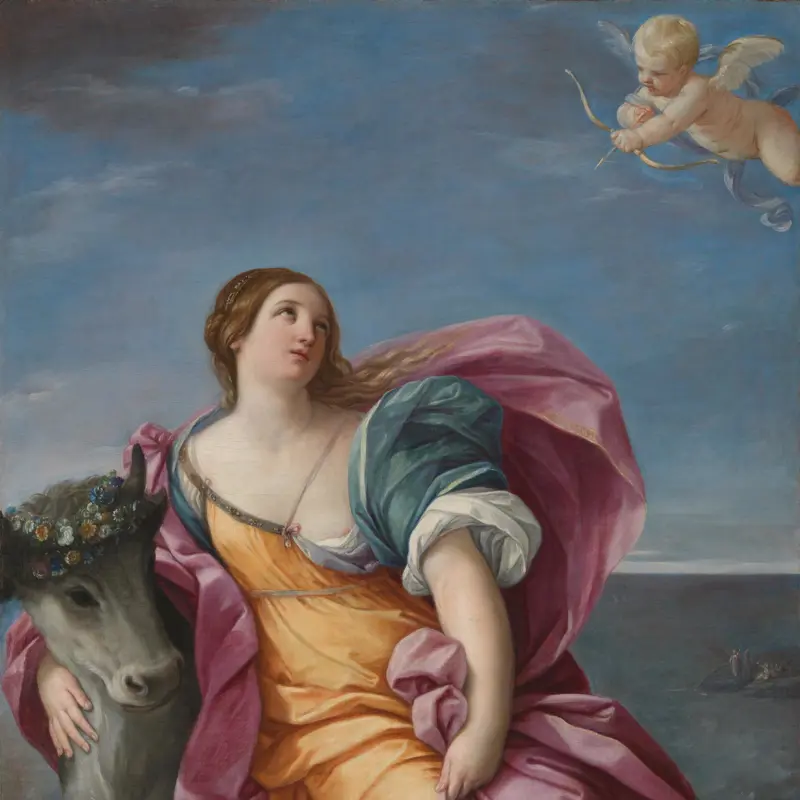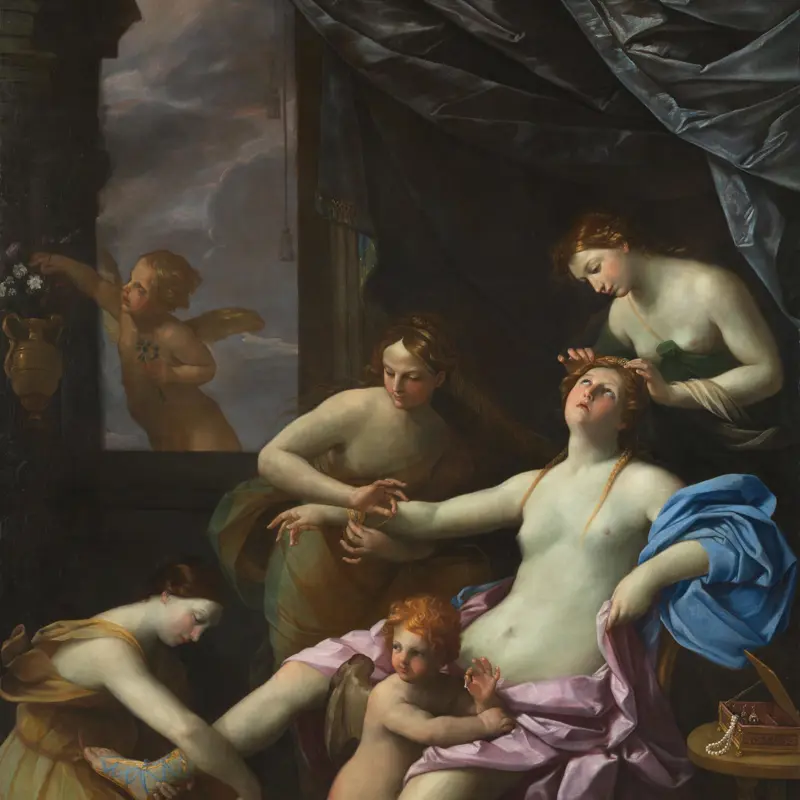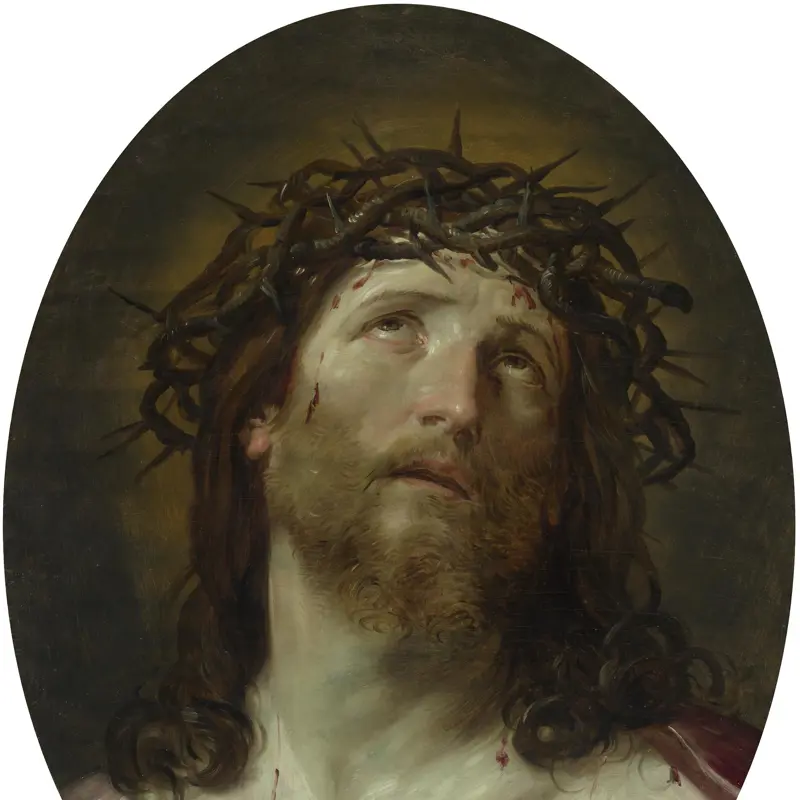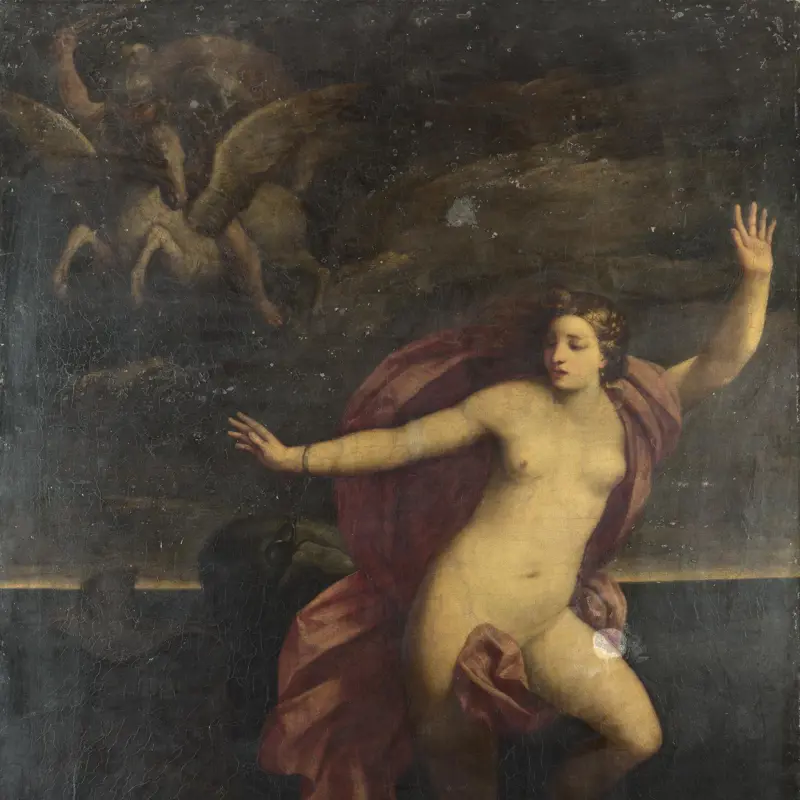Guido Reni, 'Saint Jerome', about 1624-5
About the work
Overview
Saint Jerome (about 342–420 AD) was a theologian, writer and hermit, famous for producing what is considered to be the first Latin translation of the Bible, known as the Vulgate. The saint is depicted here with a number of identifying attributes: a crucifix refers to his religious contemplation during a four-year retreat in the desert, the skull to his meditation on the transience of life, the rock an instrument of self-flagellation to ward off sinful thoughts, and the crimson-red cloak an allusion to the widely-held belief that he was ordained as a cardinal.
This painting is likely the half-length Saint Jerome that Guido Reni’s biographer Carlo Cesare Malvasia recorded as being in the Palazzo Barberini in Rome. It has been shown that this picture was acquired by the Barberini family from Carlo Ganotto in 1634, and subsequently appears listed in Barberini inventories from 1644 to 1740.
Key facts
Details
- Full title
- Saint Jerome
- Artist
- Guido Reni
- Artist dates
- 1575 - 1642
- Date made
- about 1624-5
- Medium and support
- oil on canvas
- Dimensions
- 111.8 × 86.4 cm
- Acquisition credit
- Holwell Carr Bequest, 1831
- Inventory number
- NG11
- Location
- Room 32
- Collection
- Main Collection
- Previous owners
Provenance
Additional information
Text extracted from the ‘Provenance’ section of the catalogue entry in Michael Levey, ‘National Gallery Catalogues: The Seventeenth and Eighteenth Century Italian Schools’, London 1986; for further information, see the full catalogue entry.
Bibliography
-
1678C.C. Malvasia, Felsina pittrice: Vite de' pittori bolognesi, Bologna 1678
-
1760Bologna, Biblioteca Communale dell' Archiginnasio, MS B 126: M. Oretti, Notizie de' professori del disegno, cioè dei pittori, scultori ed architetti bolognesi e di forestieri di sua scuola, 1760 - 1780
-
1771G. Hamilton, Schola italica picturae, Rome 1771
-
1840National Gallery, The National Gallery of Pictures by the Great Masters, London 1840
-
1842Mrs Jameson, A Handbook to the Public Galleries of Art in and Near London, London 1842
-
1843F. Summerly, Felix Summerly's Hand Book for the National Gallery, London 1843
-
1845G. Foggo, A Catalogue of the Pictures in the National Gallery with Critical Notes, London 1845
-
1847R.N. Wornum, Descriptive and Historical Catalogue of the Pictures in the National Gallery, London 1847
-
1854R.N. Wornum and C.L. Eastlake, Descriptive and Historical Catalogue of the Pictures in the National Gallery, with Biographical Notices of the Painters, London 1854
-
1867A.A. Lavice, Revue des musées d'Angleterre, Paris 1867
-
1878H. Blackburn, Illustrated Catalogue to the National Gallery: Foreign Schools, London 1878
-
1888E.T. Cook, A Popular Handbook to the National Gallery Including, by Special Permission, Notes Collected from the Works of Mr. Ruskin, London 1888
-
1906Half Holidays at the National Gallery, 5th edn, London 1906
-
1955O. Kurz, Bolognese Drawings of the Xvii and Xviii Centuries at Windsor Castle, London 1955
-
1971M. Levey, The Seventeenth and Eighteenth Century Italian Schools, London 1971
-
1975M.A. Lavin, Seventeenth-Century Barberini Documents and Inventories of Art, New York 1975
-
1984D.S. Pepper, Guido Reni: A Complete Catalogue of His Works, Oxford 1984
-
1986Levey, Michael, National Gallery Catalogues: The Seventeenth and Eighteenth Century Italian Schools, London 1986
-
1986M. Helston, 'Some Recently Cleaned Seicento Paintings at the National Gallery', The Burlington Magazine, CXXVIII/996, 1986, pp. 209-17
-
1986National Gallery, 'Pictures Cleaned and Restored in the Conservation Department of the National Gallery, January 1985 - December 1985', National Gallery Technical Bulletin, X, 1986
-
1988D.S. Pepper, Guido Reni: L'opera completa, Novara 1988
-
1988S.L. Caroselli, Guido Reni, 1575-1642 (exh. cat. Pinacoteca Nazionale, 5 September - 13 November 1988; Los Angeles County Museum of Art, 11 December 1988 - 12 February 1989; Kimbell Art Museum, 11 March - 14 May 1989), Bologna 1988
-
1988S. Ebert-Schifferer et al., Guido Reni und Europa: Ruhm und Nachruhm (exh. cat. Schirn Kunsthalle, 2 December 1988 - 26 February 1989), Frankfurt 1988
-
2001
C. Baker and T. Henry, The National Gallery: Complete Illustrated Catalogue, London 2001
About this record
If you know more about this work or have spotted an error, please contact us. Please note that exhibition histories are listed from 2009 onwards. Bibliographies may not be complete; more comprehensive information is available in the National Gallery Library.

